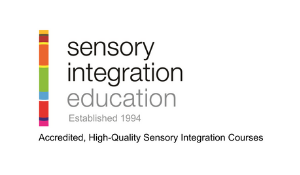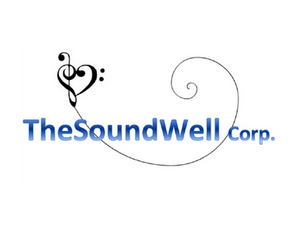Speakers \ Agenda \ Sponsors \ Presentation Details
REGULAR REGISTRATION $159
through June 10
AOTA CEUs available as an additional add-on for $90.
ASHA CEUs available as an additional add-on for $30.
All registrations receive 45-day access to 16+ hours of recordings PLUS swag bag bonus.
Day 1 | Thursday, June 8th
Neurodivergent-Affirming Feeding Therapy within the Context of Responsive Feeding
Caroline Braun, CCC-SLP
Feeding differences and challenges are common among autistic individuals, and feeding needs and differences often persist into adulthood. Unfortunately, autistic individuals are disproportionately subjected to behavioral based feeding interventions that neglect neurodivergent neurophysiology in favor of rewards and punishments to induce compliance. Responsive Feeding Therapy (RFT), as defined by Rowell, et. al. (2021), offers an ethical and evidence based context in which neurodivergent affirming feeding therapy can take place. In this presentation, RFT will be presented through the lens of Wilcox’s (1999) framework for doing, being, becoming, and belonging to introduce a framework for providing a neurodivergent affirming approach to RFT.
- Describe the ways in which sensory differences impact feeding preferences and needs
- Identify practical, direct therapy and coaching strategies for supporting feeding needs among autistic individuals
Sensory Based Motor Planning - Getting Comfortable with the Complex
Virginia Spielmann, PhD, OTR/L
The sensorimotor aspects of praxis are pivotal to the autistic experience. Contemporary research from Torres et. al. (the Micro Movement Perspective) has blown our understanding of the centrality of praxis to autistic well-being wide open. How does this model of motor planning autism marry with sensory integration theory? Motor planning is a well-established aspect of sensory integration processes and we know that it is also a whole brain process. Join this clear and accessible presentation to gain clarity on these issues. We will discuss sensory informed approaches to motor planning and how they fit with the newest research. Implications for function and participation and treatment planning will also be covered.
- Describe the interconnected dynamics of sensory integration/processing and praxis (motor planning)
- Explain how Ayres Sensory Integration theory and the Micro-Movement Perspective (Torres) are different and compatible
- Compare and contrast neurotypical motor planning with autistic motor planning differences
- Explain the impact of motor disinhibition on function and participation
- Define the four different motor responses and their neurological processes
Supporting Agency in Children with Complex Motor Systems
Kayla Carey, OTR/L
Many young autistic children are challenged by motor control differences that impact their abilities to participate in desired occupations and communicate wants, needs, and ideas with others. These complex motor system differences often present challenges in developing agency and overall well-being. This presentation will use the lens of the social model of disability to identify the motor differences faced by young autistics and provide respectful supports for clinicians and families alike.
- Explain why it is imperative to support agency in children with motor based challenges
- Describe what less commonly discussed motor based challenges can look like
- Identify considerations and practical tips for supporting professionals
Changing the Narrative on Communication: How Nonspeaking People Have Informed Us
Elizabeth Vosseller, SLP/ S2C
Nonspeaking autistic kids and adults have long been underestimated and assumed to lack intelligence, based on their inability to use speech as a robust means of communication. This presentation will discuss the fact that speech is a motor function and does not necessarily reflect the cognitive, language, and communication of nonspeaking autistic individuals. We will discuss the importance of motor in communication and how caching the requisite motor skills allows nonspeaking people to reach new levels of expressive communication.
- Explain the difference between speech and language and the relevant anatomy, physiology, and role in communication
- Explain the difference between reflexive, impulsive, purposeful, and automatic motor
- Describe the principles of the Least Dangerous Assumption and Presuming Competence
Day 2 | Thursday, June 9
Gestalt Language Development: What Is It? And Where Does Regulation Fit In?
Marge Blanc, MA, CCC-SLP
Gestalt language development is natural, but not always easy for a child to accomplish. It’s not the word + word development like we are used to. Misunderstood as meaningless echolalia, gestalts are meaningful, and can lead to true language development if we acknowledge the process and provide sensory processing and regulation supports.
- Define Gestalt Language Development as different from Analytic Language Development
- Identify the six stages of Gestalt Language Development
- Name at least three supports for Gestalt Language Development
- State one way that gestalt language of younger and older students is similar and one way that it is different
A Kind of Freedom
Anand Prahlad, PhD, MA & Virginia Spielmann, PhD, OTR/L
Join Dr. Virginia Spielmann in conversation with poet, creative nonfiction writer, editor, scholar, song writer, and musician Dr. Anand Prahlad. During this intimate interview, Dr. Prahlad reflects on his own journey discovering sensory health and explores intersections of sensory differences, autism, and blackness. His reflections on transitioning from life on a Virginia plantation to learning the social norms of the capitalist west are rich with implications for those who aspire to be neurodiversity affirming therapists.
Why Autism/Neurodivergence and Hypermobility Issues are Double Jeopardy
Jane Green, MA, Ed.
This presentation will introduce the term of symptomatic hypermobility and how it relates to Ehlers-Danlos syndromes, Hypermobility Spectrum Disorders and the autistic community. There will be a brief history of the conditions and symptoms of symptomatic hypermobility and how it is diagnosed or not. Key symptoms and conditions in the body and brain are discussed, as well as the relevance to the autistic community and practitioners, and some key tips to take away.
- Describe the history of symptomatic hypermobility
- Recognize key issues, symptoms, and conditions of symptomatic hypermobility in the autistic/neurodivergent population
- Explain symptomatic hypermobility and its relevance to autism
Interactive Workshop | Overview of Music Interventions with Sensory Processing and Autism: A Music Therapy Perspective
Becky Lee, MM, MT-BC & Sarah Hallgrimson, MM, MT-BC, CAS
This workshop will address the benefits of music therapy and why certain elements of music can be beneficial for individuals with Sensory Processing and Autism. Participants will gain knowledge in different goal areas and learn how music can be used to support them. Participants will engage in active experientials with the presenters and apply the concepts learned via a discussion and a worksheet.
- List at least elements of music for two different goal areas
- Name three benefits of music for Sensory Processing and Autism
- Identify elements of music to adapt for more or less sensory stimulation
Day 3 | Friday, June 10
Autism Through a Camera Lens
Eden & Cole Spofford
This presentation explores the relationship between a neuro-typical and neuro-divergent set of siblings. Using the medium of photography, they help us explore and understand one young man's experience as a young autistic.
- Develop a deeper understanding of the autistic experience through the medium of photography
- Recognize the need for more expressions of the autistic experience through art
Prioritizing Sensory Health in Speech Therapy
Amy Grant, MS, CCC-SLP, CCTS-I
This presentation connects the implications of sensory health on success of therapeutic activities, validity of testing results, caregiver participation, and the client’s well-being. We will explore ways to avoid emotional and sensory dysregulation during treatment sessions in order to maximize the therapeutic relationship and ensure successful sessions.
- Identify possible deregulatory stimuli within your own workspace/therapy room
- Describe ways to reduce dysregulating stimuli within a therapeutic evaluation/session
- Explain the importance of sensory health within therapeutic sessions
The "IM" in Stim
Morénike Giwa Onaiwu, PhD(c), MA
People are increasingly beginning to acknowledge the benefits of allowing individuals to stim, such as supporting regulation and connection. However, while embracing that stimming helps in these functional, practical ways, we should also value stimming for the sake of stimming itself – much like art. This presentation will examine intrinsic motivation and will celebrate aspects of stimming that don't necessarily benefit anyone except the individual themselves. Hopefully, in doing so participants will feel empowered to "lean in" to the aspects of stimming that are just for us, the autistic individuals.
- Recognize the understood and evidence-based benefits and functional outcomes of stimming
- Develop awareness that stimming should be celebrated even in the absence of these benefits and outcomes, resulting in enhanced awareness of the value of stimming in of itself
- Identify ways that individuals can engage in stimming for its own sake as a reflection of internal motivation and as an active pursuit of joy
Live Expert Panel Discussion | Dr. Virginia Spielmann, Morénike Giwa Onaiwu, Shannon Des Roches Rosa, Amy Grant and Ira Kraemer
SWAG BAG BONUS Presentations
Sensory Anxiety & Autism
Virginia Spielmann, PhD, OTR/L
During this presentation, Dr. Spielmann will introduce and discuss the relationship between anxiety and atypical sensory processing in individuals with autism. There are many places along the pathway from the origin of stimuli to interpretation—and then execution—of the adaptive response where things can go awry, potentially causing mild to severe anxiety. This presentation introduces concepts that are pivotal to a holistic and respectful approach to the understanding sensory-anxiety-based loss of function with special attention to the unique make-up of the neurodiversity expressed within individuals on the Autism Spectrum.
- Summarize potential interactions between atypical sensory integration and processing and anxiety
- Describe three ways that sensory integration and processing in autism differs from the neuromajority
- Discuss two main implications of altered sensory integration and processing on anxiety, sense of self and function
Do You Get PTSD From OT, PT, ST? Which Therapy is Best for Your Child?
Erin Schneider
This presentation gives an overview of different types of therapies available for individuals with disabilities. It will give definitions and descriptions of occupational therapy, physical therapy, speech therapy and behavior therapy, and discuss ways they differ and complement each other. We will also talk about things to consider when choosing the right mix of therapies for an individual.
- Define occupational therapy, physical therapy, speech therapy, and behavior therapy
- Describe how each therapy differs, what they cover and where they best apply
- Review case examples of how each therapy works, along with some successes and potential pitfalls
Measuring the Sensory Integration and Processing Construct: Looking Beyond the Problems
Gustavo Reinoso, PhD
Despite having valid and reliable assessments, sensory integration and processing continues to be a difficult and often elusive construct to measure. The results of testing, clinical observations, and proxy measures often circle around concepts of deficits that evolved out of classic testing theory, rarely highlighting strength related profiles. The following presentation revises common measurement difficulties in our available assessment tools and invites clinicians to consider alternative paradigms. These alternative paradigms capitalize on different ways of measuring skills while capturing profiles of strengths along constructs such as curiosity, sense of agency, motivation, and perseverance, among others.
- Identify the most common measurement approaches utilized when creating assessment tools
- Examine how different measures may bias your professional reasoning influencing the creation of ‘disorder based’ or ‘strength based’ profiles
- Create a plan to incorporate new measures in your clinical practice
- Describe less common constructs that may assist you in creating strength-based profiles when providing services for your client
Introduction to Goal Attainment Scaling for Clinical Practice
Mim Ochsenbein, MSW, OTR/L
This introduction to the evidence-based practice of Goal Attainment Scaling provides the clinician (OT/SLP/PT/MH) with concrete steps and examples of how to apply the concepts of GA Scaling to practice for any age or stage of client population. Components addressed include: the use and of a Family/Client centered interview, steps to producing GA scales, and how to use GA Scales as measurement tools for practice, management and research purposes. Discussion of the integration of the family/client identified goals with clinical assessment findings and clinical reasoning is also highlighted.
- Explain the history and purpose of Goal Attainment Scaling (GAS)
- Identify family/client priorities for treatment related to goal development
- Describe the structure of functional goal development and scale components
- Describe how to use GAS to track treatment effectiveness
- Summarize the components of a family-centered interview
Strengths-Based Assessment: STAR Institute's Introduction to Neuro-Divergent Affirming Goal Setting
Mim Ochsenbein, MSW, OTR/L
This presentation will build on the established uses of GA Scaling and apply a neuro-divergent affirmative lens. Self-Determination Theory (SDT), Social Disability Model, and Autonomous Motivation will be defined as core concepts, and a framework for applying these to the development of NDA GA Scales will be provided. Multiple case examples will be given.
- Explain the Social Disability Model in terms of focus of GA Scale goals
- Identify the role of self-determination theory in ND affirmative GA Scaling
- Define Autonomy, Competence and Relatedness, Motivation
- Apply these 4 concepts to clinical reasoning for GA Scale Development
- Develop GA scales that reflect client agency and dignity
Thank you to our 2022 Sponsors
 |
 |
 |
 |
 |
